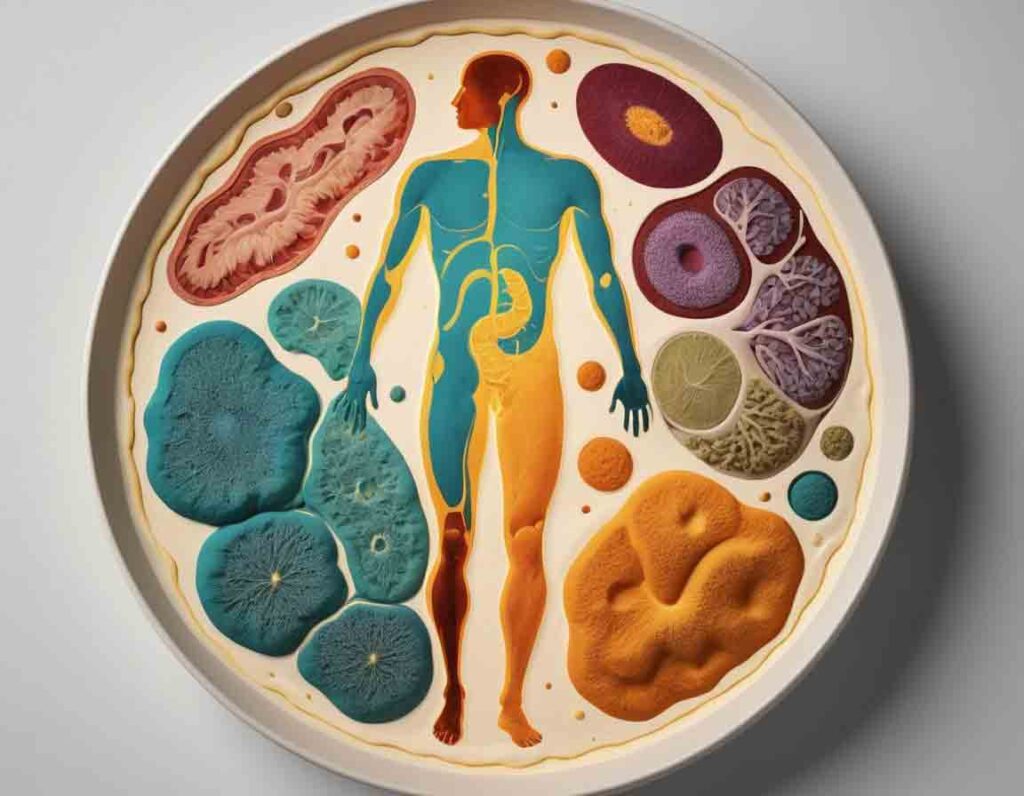Warning: Major Gut Microbial Changes After 40! Discover What Could Be Happening Inside You Right Now
Microbial changes in mid-40s and early 60s
Stanford Study Uncovers Two Surprising Age Spikes: What Happens at 44 and 60?
Stanford Medicine research reveals notable transformations at the molecular and microbial levels in individuals during their mid-40s and early 60s, with potential implications for health and age-related disease risks.
Have you ever felt as though your body is suddenly deteriorating? You might not be imagining it. A recent study from Stanford Medicine highlights how, during our 40s and 60s, many of our internal molecules and microorganisms experience significant fluctuations.
Researchers analyzed a vast array of molecules and microbiomes—comprising bacteria, viruses, and fungi from individuals aged 25 to 75. They discovered that these elements don’t alter gradually with time. Instead, they identified two critical periods of rapid change, around ages 44 and 60. These findings have been documented in a paper published in Nature Aging.
“We’re observing more than just gradual changes over time; there are moments of significant shifts,” said Michael Snyder, PhD, the chair of genetics and senior author of the study. “Both the mid-40s and early 60s represent periods of intense change, irrespective of the molecular class.”
Xiaotao Shen, PhD, a former postdoctoral scholar at Stanford Medicine and now an assistant professor at Nanyang Technological University Singapore, was the study’s lead author.
These substantial changes could impact our health—especially with molecules related to cardiovascular disease showing marked alterations at both key time points, and those tied to immune function undergoing significant changes in the early 60s.
Sudden Shifts in Molecular Numbers: Microbial changes in mid-40s and early 60s
Snyder, who holds the Stanford W. Ascherman, MD, FACS Professorship in Genetics, and his team sought to examine the pace of molecular and microbial shifts due to the observation that the likelihood of developing many age-related diseases does not increase linearly with age.
For instance, the risks for conditions like Alzheimer’s and cardiovascular disease rise sharply after a certain age, unlike the more gradual increase seen in individuals under 60.
The study utilized data from 108 individuals who had been monitored to better understand the biology of aging. Previous findings from this group have led to the identification of four distinct “ageotypes,” indicating that organs such as the kidneys, liver, metabolism, and immune system age at different rates among different individuals.
Participants in the new study provided blood and other biological samples every few months over several years. Researchers tracked a wide variety of molecules, including RNA, proteins, and metabolites, alongside changes in the participants’ microbiomes.
The analysis covered more than 135,000 different molecules and microbes, resulting in nearly 250 billion data points.

The study found that thousands of molecules and microbes undergo shifts in their abundance—either increasing or decreasing.
Approximately 81% of all studied molecules exhibited non-linear fluctuations, indicating that they change more at certain ages than at others. Clusters of molecules with the most significant changes were found predominantly during two periods: mid-40s and early 60s.
While much research has focused on how specific molecules change with age and how biological age can differ from chronological age, few studies have examined the rate of biological aging.
The researchers note that the significant changes observed in the early 60s are not unexpected, given the known increase in age-related disease risks and other phenomena during this stage of life.
The substantial changes seen in the mid-40s, however, were more unexpected. Initially, the researchers hypothesized that menopause or perimenopause might be driving these changes in women, potentially skewing the overall results. But further analysis showed that men in their mid-40s also experienced significant shifts.
“This finding suggests that while menopause or perimenopause may contribute to the changes seen in women, there are likely other, more influential factors at play for both men and women. Identifying and understanding these factors should be a priority for future research,” Shen said.
Health and Disease Implications
In people in their 40s, significant changes were observed in molecules related to alcohol, caffeine, and lipid metabolism; cardiovascular disease; and skin and muscle.
For those in their 60s, changes involved carbohydrate and caffeine metabolism, immune regulation, kidney function, cardiovascular disease, and skin and muscle.
Some of these changes may be linked to lifestyle or behavioral factors specific to these age groups rather than purely biological causes, Snyder noted.
For example, impaired alcohol metabolism could be associated with increased alcohol consumption during the often-stressful period of mid-40s.
The research team intends to further investigate the causes of these molecular and microbial changes. Regardless of their origins, these findings underscore the importance of maintaining health vigilance, particularly in one’s 40s and 60s.
This could mean increasing physical activity to protect cardiovascular health and preserve muscle mass or reducing alcohol intake as alcohol metabolism slows.
“I strongly believe in adjusting our lifestyles while we’re still healthy,” Snyder emphasized.
study Reference
“Nonlinear dynamics of multi-omics profiles during human aging” by Xiaotao Shen, Chuchu Wang, Xin Zhou, Wenyu Zhou, Daniel Hornburg, Si Wu, and Michael P. Snyder, 14 August 2024, Nature Aging.
Microbial changes in mid-40s and early 60s







